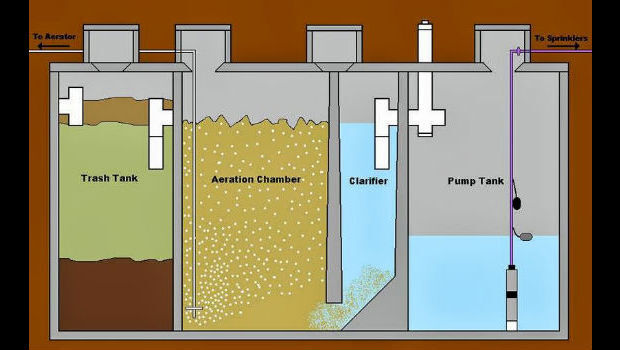Septic VS Aerobic - What Is The Difference?

There are two ways to treat sanitary wastes from households: septic and aerobic. The primary job of both is to clean the water up before sending it to the secondary treatment area.
SEPTIC VS. AEROBIC SYSTEMS
SEPTIC SYSTEMS
Let’s look at septic first just because it is the most common. A septic tank works anaerobically which means there is very little to no oxygen dissolved in the water. Material that is heavier falls to the bottom of the tank. The lighter fats, oils, and greases float to the top. This takes time.
Usually, a septic tank is designed to retain the water for approximately 24 hours. Doing a week’s worth of laundry all in one day will agitate the water in a septic tank and let the dirtier water go onto the secondary treatment area. The bacteria in a septic tank works very slowly. It has to first work for its food and then work for its oxygen. This is why it is important to keep the use of “killers” to a minimum. A septic tank can do very little for the material that is suspended in the water or what makes the water tinted grey or black.
AEROBIC SYSTEMS
Aeration systems usually will have a septic tank or “trash trap” as the first treatment of the sanitary waste from the home. Once the water passes through the trash trap, the water which contains suspended solids, just like the septic tank, passes into another compartment where air is introduced in some mechanical manner. This keeps the bacteria and its food, the suspended solids, in suspension in this compartment. It also gives the bacteria free oxygen to use in its process of degrading the waste. The bacteria cell will grow and make itself heavier so when the water and the bacteria flow through the tank to a final quiescent, or calm compartment, it settles out. The bacteria are transported back to the aeration compartment where the bacteria starts the process of eating suspended solids again. The water which leaves the tank will be cleaner and clearer looking than water from a septic tank; it will usually need to have some sort of further treatment before it is directly discharged into the atmosphere.
System designs that use the soil for further treatment and recycle the water back into the soil take into account the fact that water from an aerobic tank will usually produce a cleaner water than a septic tank by itself. Therefore, sometimes the secondary treatment behind an aeration tank will be smaller in size because of the expectation of the water to be cleaner and easier for the soil to dissipate. Without the aerator working properly, and proper maintenance of both types of systems, this could cause premature failure of the secondary treatment area which is the most costly part of the system. This is why it is important to keep all parts of a septic system properly maintained and working.
KILLERS TO AVOID!
Anti-bacterial soaps, antibiotics, paints, greases, and oils .
